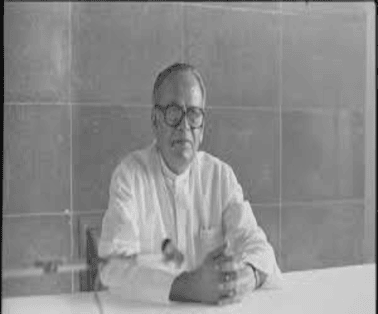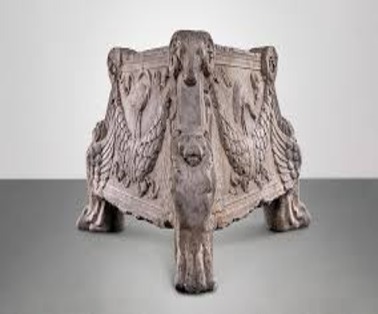The SR Bommai Case (1994) remains one of the most significant constitutional decisions in India. In this landmark judgment, the Supreme Court interpreted Article 356 of the Indian Constitution, which empowers the Centre to impose President’s Rule in states under certain circumstances. The ruling continues to guide how Centre-State relations operate within India’s federal structure.
SR Bommai Case and Article 356
- The S. R. Bommai v. Union of India case, decided by the Supreme Court of India in 1994, is considered a landmark judgement regarding the interpretation of Article 356 of the Constitution of India and its limitations.
- Article 356 contains provisions “in case of failure of constitutional machinery in States”, including that for the imposition of President’s rule.
- In 1989, the Congress government at the Centre dismissed the Janata Dal-led Karnataka government, headed by Chief Minister S. R. Bommai, by imposing President’s rule.
- Thus, the dismissed chief minister moved the Karnataka High Court, which dismissed his challenge against the Centre.
- Bommai challenged the dismissal in the Supreme Court, arguing that the President’s action was unconstitutional and politically motivated.
- The Supreme Court, in a 9-0 decision, upheld the validity of Article 356 but laid down several important guidelines for its application.
- Bommai is still the settled law on when and how President’s rule can be imposed, and was invoked in recent cases challenging President’s rule in Uttarakhand (2016) and Arunachal Pradesh (2016), both of which were overturned by the Supreme Court
Background of the SR Bommai Case
- In 1985, the Janata Party won the Assembly elections in Karnataka and formed the government under Chief Minister Ramakrishna Hegde
- In 1988, Hegde was replaced by SR Bommai. Since there was a merger of the Janta party with Janata Dal, new members were inducted into Bommai’s ministry.
- In September 1988, KR Molakery, a legislator from the Janata Dal, defected from the party, and presented a letter to Governor P Venkatasubbaiah along with 19 other members of the Legislative Assembly, stating their decision to withdraw support from the Bommai government.
- The government at the Centre dismissed the state government using Article 356, without giving Bommai a chance to prove his majority and imposed President’s Rule.
- The ground of dismissal was that the government had lost its majority following large-scale defections orchestrated by several party leaders.
The Verdict: SR Bommai Case Key Takeaways
- The nine-judge Bench in the Bommai case adjudicated on a range of issues around the constitutional limitations of the use of Article 356.
- The court laid down a number of guidelines to curb the Centre’s capacity to dismiss a state government and upheld the federal structure enshrined in the Constitution.
- The SC unanimously held that the President’s proclamation can be subject to judicial review on grounds of illegality, malafide, extraneous considerations, abuse of power, or fraud.
- While the President’s subjective appraisal of the issue cannot be examined, the Court said that the material relied on for making the decision can be reviewed.
- The verdict also made Parliamentary approval necessary for imposing President’s rule. Only after the proclamation is approved by both Houses of Parliament can the President exercise the power.
- Till then, the President can only suspend the state legislature.
- If the Parliament does not approve the proclamation within two months, then the government that was dismissed would automatically stand revived
Connection Between SR Bommai Case and Article 370 Abrogation
- A key question in the Kashmir case was whether Article 370 could have been abrogated when the state was under President’s rule.
- The erstwhile state had been under President’s rule since 2018, and the question before the court was whether the President could give consent to the revocation of J&K’s special status.
- Here, the Supreme Court relied on the Bommai ruling to hold that the actions of the President are constitutionally valid.
- The Court said that the Bommai ruling held that the actions taken by the President after issuing a Proclamation are subject to judicial review, but the judges had adopted varying standards to test the validity of the executive orders
Article 356
- Article 356 of the Constitution of India is based on Section 93 of the Government of India Act, 1935.
- According to Article 356, the President’s Rule can be imposed on any state of India on the grounds of the failure of the constitutional machinery.
- President’s Rule can be imposed in two situations: when the President receives a report from the state’s Governor or is otherwise convinced that the state government cannot function according to the Constitution (Article 356), and when a state fails to comply with directions from the Union government (Article 365).
- During the President’s Rule, the state government is suspended, and the central government directly administers the state through the Governor.
- Parliamentary approval is necessary for imposing the President’s Rule, and it should be approved in both Houses of Parliament within two months through a simple majority.
- Initially, the President’s Rule is for six months and can be extended for up to three years with parliamentary approval every six months.
- The 44th Amendment to the Constitution (1978) introduced constraints on extending the President’s Rule beyond one year, allowing extension only in case of a national emergency or if the Election Commission certifies the necessity due to difficulties in conducting state assembly elections
Post-Imposition Procedures Under President’s Rule
- The governor carries on with the administration of the state on behalf of the President. He or she takes the help of the state’s Chief Secretary and other advisors/administrators whom he or she can appoint.
- The President has the power to declare that the state legislature’s powers would be exercised by the Parliament.
- The state legislative assembly would be either suspended or dissolved by the President.
- When the Parliament is not in session, the President can promulgate ordinances with respect to the state’s administration.
Why the SR Bommai Case Still Matters
The SR Bommai Case continues to be a cornerstone in Indian constitutional law. It strengthens democratic values by ensuring that President’s Rule is not misused for political gains. Its emphasis on judicial review, floor tests, and federal integrity ensures a more balanced exercise of power between the Union and the States.
To Download Monthly Current Affairs PDF Click here
Click here to get a free demo
Discover all about CLAT Exam



